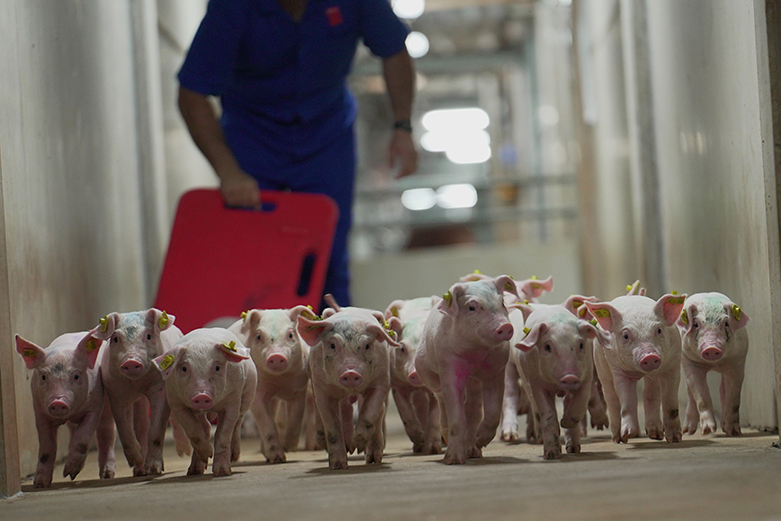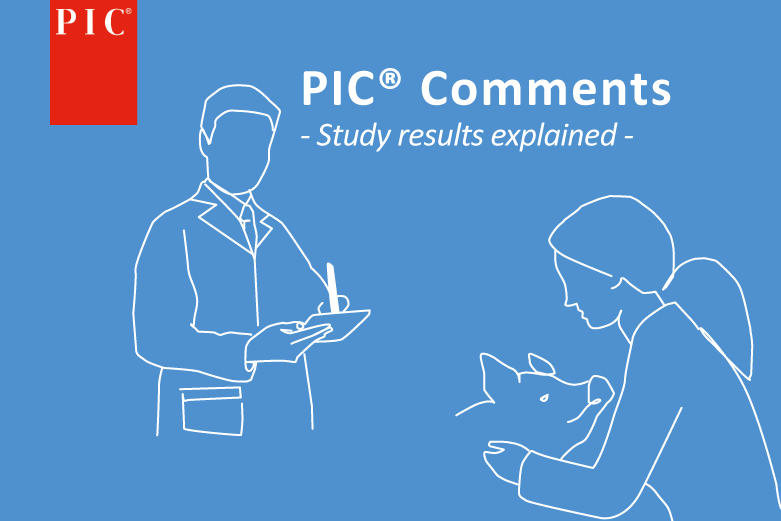Author: Dr. Michael Kleve-Feld, Technical Services: Reproduction Management
Gilts, regardless if bought in or home grown, are fundamental to ensure a long-term high producti¬vity level. On one hand it is important to replace with high quality gilts. On the other hand, professional gilt management is key to for sustainable success.
Parity one is pivotal for the gilt’s lifetime productivity as animals with high litter size in the first farrowing are typically superior in consecutive parities as well.
A PIC analysis on 5.100 sows indicated that sows with one additional piglet in their first litter (as compared to the average) are still 0,4 piglets superior in subsequent litters. Over five litters this sums up to additional 2,6 total born piglets (Graphic 1).

In addition, an optimum herd parity structure is characterized by gilts representing 16 – 23 % of all animals (Graphic 2).

Considering these two facts, we will discuss management strategies enabling you to achieve superior biological performance in gilts and consequently in the whole herd.
Thorough gilt selection: Only animals in good overall condition will start successfully in their “career”
A good overall condition is prerequisite for gilts to reach their full genetic potential. Animals falling behind in size/weight, displaying joint, or claw-issues or having less than 14 teats should be removed.
Gilt development
- Ideally PIC gilts are fed ad-libitum from birth till first mating
- Goal
- Average lifetime daily gain 600 to 770 g
- Weight at first service 135 to max. 160 kg
- Age at first service 200 to 210 days
Another analysis conducted by PIC based on 50.000 PIC gilts has shown, that animals with such growth rates achieve the best litter performance (Graphic 3).

PIC analysis based on 50.000 PIC gilts
Lower daily gains caused by sickness, off-feed events etc. cause performance depression. On the other hand, too heavy gilts raise feeding costs not only in the GDU and p0 but also during consecutive parities due to higher energy maintenance levels. Additionally, heavy gilts are expected to be affected more frequently by feet and leg structural issues with implications on retention rate.
Only on rare occasions where farms are equipped with a scale that is well integrated in the operational flow. In these cases, the PIC Flank-to-Flank Tape which measures the body circumference of gilts can be useful. This body circumference tightly correlates with the body weight of the animals. A circumference of 89 to 91,5 cm represents the optimum weight for breeding.
If you are interested in the PIC Flank-to Flank Tape, please reach out to your local PIC Key Account Manager for more information.
Boar exposure and heat detection
As well as the right weight of gilts at first breeding, a heat detection protocol should be maintained to ensure that animals are not mated prior to their second heat. Any vaccination programs should be finished at least three weeks prior the first breeding.
- Boar exposure starting between 168 and 175 days of age (24 to 26 weeks)
- One active boar per 100 gilts
- Daily boar exposure, preferable in the morning hours
- Important: Direct contact between gilt and boar (Nose to nose contact or same pen)
- Gilts that do not show signs of oestrus until six weeks after the beginning of boar exposure should be considered for removal.
If less than 70% of all gilts do not show signs of oestrus until four weeks after the beginning of boar exposure a systematically evaluation of risk factors should be conducted. Aspects to cover include sub optimal barn climate, reduced feed intake, docile or low number of teaser boars, labour quality or any type of stress or disease.
Indicators of good gilt management
These are defined by the biological performance of the gilt as well as her longevity.
At optimum management, these performance indicators can be expected:
- A minimum of 70 % of the gilts display oestrus until 4 weeks after initial boar exposure
- Farrowing rate beyond 90 %
- A minimum of 15,5 total born piglets
- At least 90% rebred for P2
- Wean to oestrus interval below six days
- Longevity/utilization rate: 75 % or more animals should achieve three or more litters
In summary
Gilts are fundamental to maintain/raise herd productivity. Essential factors for superior fertility and longevity of sows:
- Health status and overall condition
- Ad libitum feeding from birth to first breeding
- First breeding between 135 and 160 kg
- Sufficient intensive boar exposure starting at 24 weeks of age




